I went out to an interesting site here in Boca the other day. It’s on a former industrial park, part of the large IBM complex that used to be one of the economic engines of the city. (It was here that IBM “invented” the personal computer and led to amazing growth at the site, but all that growth had its cost: after IBM’s R&D costs and overhead were factored in, it turned out that other manufacturers were easily able to produce PCs with far lower costs, which eventually drove IBM out of the hardware business and out of Boca Raton. I simplify, of course.)
Near the swampy, undevelopable southwest corner of the site, IBM dug a nearly perfectly round, steep-sided hole in a low-lying area of the site, and called it Blue Lake (IBM—Blue—get it? Actually, IBM called it West Lake initially, so the etymology is misleading).
This lake, with its steep sides and perfectly circular outline, was just something pretty to look at; it never afforded any ecological value whatsoever. With IBM gone, in 2002 the city purchased the land for commercial use and worked with the county on the parts of the site that were uneconomic for development. This one corner of the property, 79 acres that had never been developed (too low-lying and swampy), became Pondhawk Natural Area back in 2006, when restoration work started on this weed-choked, trash-heaped, swampy, disturbed area.
In 2010 the major restoration work was completed, exotic plants removed, native species planted, etc. The county filled in the western side of the lake with a gently sloping “littoral” zone, which provides a substrate for emergent vegetation, which equates to foraging areas for dragonflies and wading birds:
The natural area consists of a couple of low ridges (actually ancient dunes marking stands of sea level in years gone by) bisected by a slough. This variation in elevation creates distinct ecological zones. In just 79 acres, there are 5 different ecological systems: scrub, scrubby flatwoods, mesic flatwoods, hydric hammock, and sawgrass slough.
There are many such ridge-and-slough systems across south Florida; this one was part of a small system of wetlands that formed the headwaters of the Hillsboro river (like all the other rivers in south Florida, this one was channelized as part of the project to drain the ‘glades; it is now known as the G-8 canal).
Over the years, the Pondhawk site became overgrown by weedy species (the dreaded “invasive exotics” of south Florida: Brazilian Pepper, etc.). The management plan sums up the problem:
Fire exclusion, canal and lake excavation, construction of adjacent roads and buildings, illegal dumping, drainage, and exotic pest plant invasions have all impacted the site. In addition, managers face special challenges unique to fragmented natural communities located within urban and suburban environments.
One of the introduced species is a cute little wasp, Larra bicolor:
I think it’s on a naturalized (not native but widely established) weed, shrubby false buttonweed (Spermacoce verticillata), but I’m not sure.
Anyway, as usual, I didn’t get enough pictures, so I knew I had to get back to the site. And then one evening I received an email from the city about the grand opening what was going to be taking place there the next morning. What a perfect opportunity to meet and greet the local, city, county, state, and federal leaders who made this restoration happen! And here they are, about to cut the ribbon:
After the spirited opening orations were complete, we went on a site visit (I am a member of the Environmental Advisory Board so I get invited to these shindigs), and I was so pleased to be able to go around the trail with my teacher from the Florida Master Naturalist Program: Steve Bass. You would be hard pressed to find a more knowledgeable and personable guide to a natural area in Palm Beach County.
He explained to us (the group had dwindled to Steve, me, and two other interested people) that the giant air plant in the next picture (Tillandsia utriculata) is perhaps the only bromeliad we have in Florida that sends up only one flower spike: one and done for this guy. So the spike is loaded with seeds, because this plant doesn’t get another reproductive opportunity. You can see the seeds on this 6-foot-long spike, if you can ignore the cluster of dead oak leaves that is so visually distracting:
This plant, and many other native bromeliads, are under threat from both native and imported weevils. According to my picture deck (Bromeliads and Bromeliad Weevils of Florida. UF/IFAS SP-321), the native weevil, Metamasius mosieri, has been found on T. utriculata, while the exotic weevil, M.callizona, has not.
Another very interesting plant on the site is Trema micrantha, Florida trema. It was in fruit, and it looked to me like an explosion of orange fireworks along this multistemmed shrub:
By the way, there are Eastern Pondhawks (Erythemis simplicicollis) present on the site; I just don’t have any pictures of them from there yet. But here is one from my back yard:

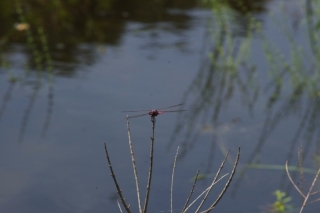
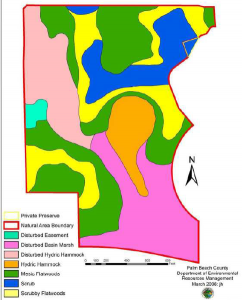
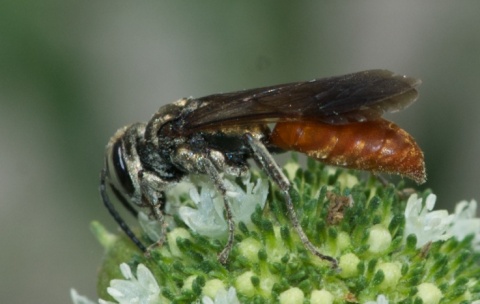
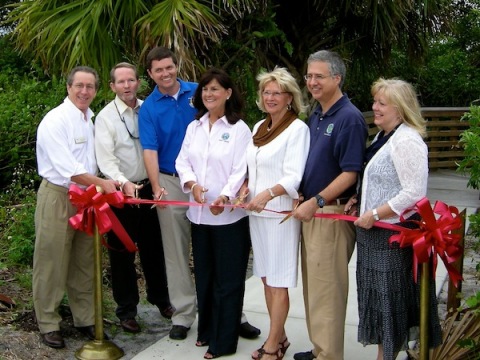
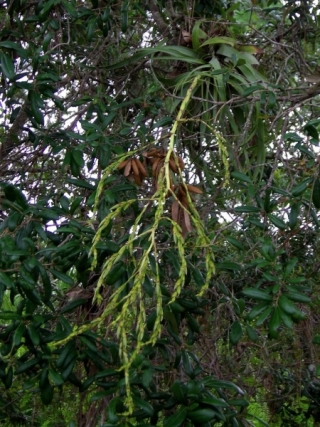
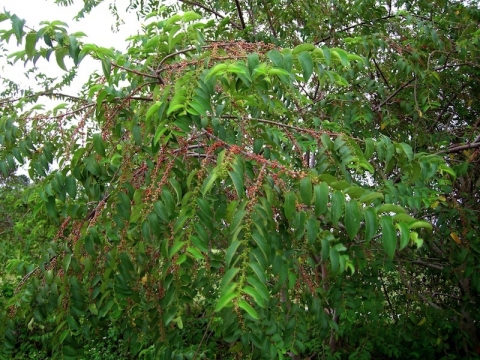
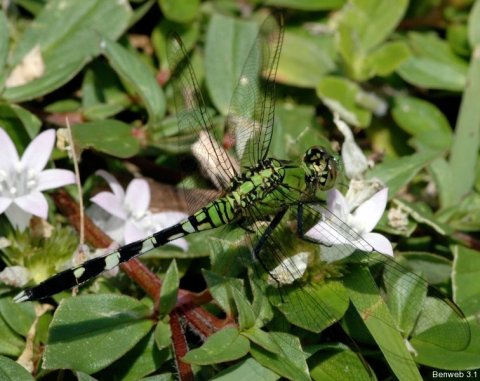
1 thought on “Pondhawk Natural Area”